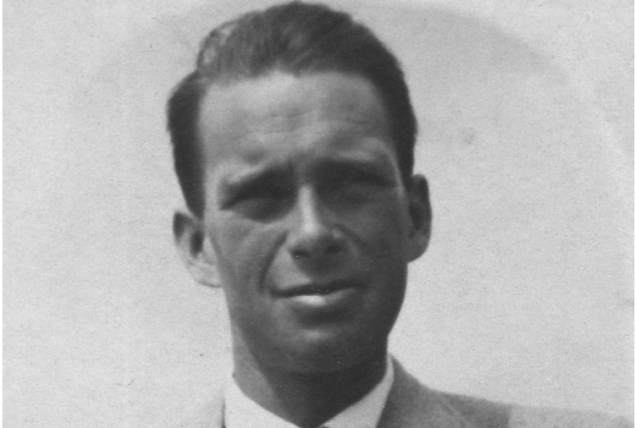
skilled in elementary particle theory and in functioning of accelerators. Credit: F Touschek
Bruno Touschek was born in Vienna on 3 February 1921. His mother came from a well-to-do Jewish family and his father was a major in the Austrian Army. Bruno witnessed the tragic consequences of racial discrimination that prevented him from both completing his high school and university studies in Austria. But he also experienced the hopes of the post-war era and played a role in the post-war reconstruction. With the help of his friends, he continued his studies in Hamburg, where he worked on the 15 MeV German betatron proposed by Rolf Widerøe and learnt about electron accelerators. After the war he obtained his PhD at the University of Glasgow in 1949 , where he was involved in theoretical studies and in the building of a 300 MeV electron synchrotron. Touschek emerged from the early-post war years as one of the first physicists in Europe endowed with a unique expertise in the theory and functioning of accelerators. His genius was nurtured by close exchanges with Arnold Sommerfeld, Werner Heisenberg, Max Born and Wolfgang Pauli, among others, and flourished in Italy, where he arrived in 1953 called by Edoardo Amaldi, his first biographer and first Secretary-General of CERN.
In 1960 he proposed and built the first electron-positron storage ring, Anello di Accumulazione (AdA), which started operating in Frascati in February 1961. The following year, in order to improve the injection efficiency, a Franco-Italian collaboration was born that brought AdA to Orsay. It was here that the “Touschek effect“, describing the loss and scattering of charged particles in storage rings, was discovered and the proof of collisions in an electron-positron ring was obtained.
AdA paved the way to the electron-positron colliders ADONE in Italy, ACO in France, VEPP-2 in the USSR and SPEAR in the US. Bruno spent the last year of his life at CERN, from where – already quite ill – he was brought to Innsbruck, Austria, where he passed away on 25 May 1978 aged just 57.

Bruno Touschek’s life and scientific contributions were celebrated at a memorial symposium from 2 to 4 December, held in the three institutions where Touschek has left a lasting legacy: Sapienza University of Rome, INFN Frascati National Laboratories and Accademia Nazionale dei Lincei. Contributions also came from the Irène Joliot-Curie Laboratoire, and sponsorship from the Austrian Embassy in Italy.
In addition to Touschek’s impact on the physics of particle colliders, the three-day symposium addressed the present-day landscape. Carlo Rubbia and Ugo Amaldi gave a comprehensive overview of the past and future of particle colliders, followed by talks about physics at ADONE and LEP, and future machines, such as a muon collider, the proposed Future Circular Collider at CERN and the Circular Electron Positron Collider in China, as well as new developments in accelerator techniques. ADONE’s construction challenges were remembered. Developments in particle physics since the 1960s – including the quark model, dual models and string theory, spontaneous symmetry breaking and statistical physics – were described in testimonies from the universities of Rome, Frascati, Nordita and Collège de France.
Touschek’s direct influence was captured in talks by his former students, from Rome and the Frascati theory group, which he founded in the mid 1960s. His famous lectures on statistical mechanics, given from 1959 to 1960, were remembered by many speakers. Giorgio Parisi, who graduated with Nicola Cabibbo, recollected the years in Frascati after the observation of a large hadron multiplicity in e+ e– annihilations made by ADONE, and the ideas leading to QCD.
The final day of the symposium, which took place at the Accademia dei Lincei where Touschek had been a foreign member since 1972, turned to future strategies in high-energy physics, including neutrinos and other messengers from the universe. Also prominent were the many benefits brought to society by particle accelerators, reaffirming the intrinsic broader value of fundamental research.
Touschek’s life and scientific accomplishments have been graphically illustrated in the three locations of the symposium, including displays of his famous drawings on academic life in Roma and Frascati. LNF’s visitor center was dedicated to Touschek, in the presence of his son Francis Touschek.







